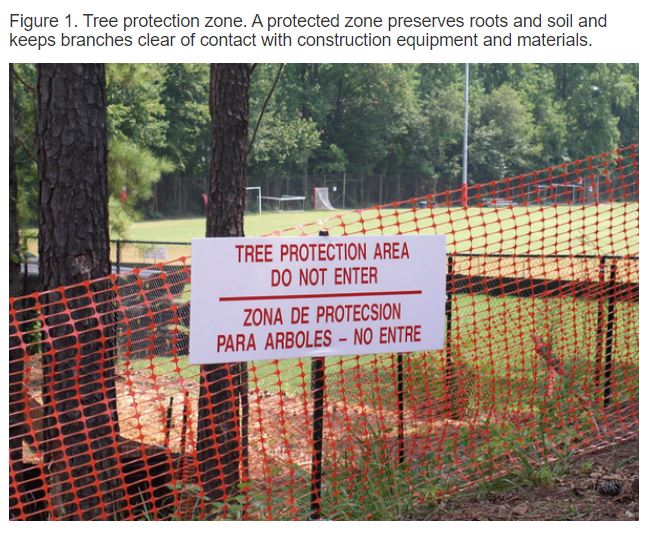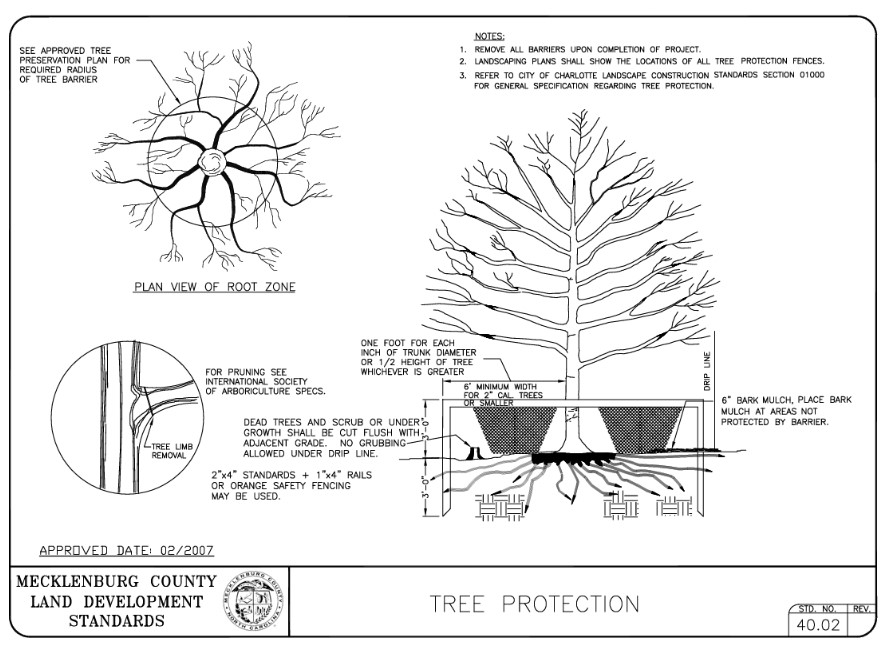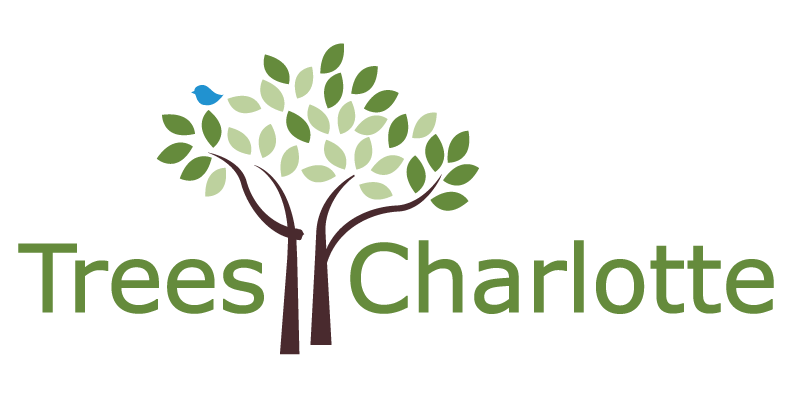Protecting Trees from Construction
How to Properly Mulch Your Tree
4.26.24Renters Can Help Our Trees Too!
4.26.24
Photo Source: https://content.ces.ncsu.edu/construction-and-tree-protection
Have you ever looked at a tree in an urban area and noticed that a lot of tree’s crown seems to be dying? That could be the result of construction activities or root damage from years in the past. Urban trees are vulnerable to construction activities such as infrastructure upgrades, paving, site development, and re-grading, and the effects of underground root damage to trees may not be seen above ground for several years. Soil compaction from heavy equipment driving over the tree’s roots can also slowly kill a tree. For a tree to survive a construction project in the long term, steps must be taken to protect it during development.
A Tree Protection Zone (TPZ), which is a wide area around the tree where construction activities are limited, should be established according to Urban Forestry recommendations. A Tree Protection Zone should be at least one foot of space for every inch of trunk diameter. For instance, a heritage tree that is 30″ in diameter (or 94″ in circumference) should have a Tree Protection Zone of at least 30′ around the full base of the tree, starting from the outer trunk of the tree. Some projects can be redesigned to minimize damage to existing trees. Furthermore, measures can be taken to reduce soil compaction and disperse the weight of construction equipment. If it’s absolutely necessary to sever tree roots, there are several steps that can be taken in advance to reduce the impact of root cutting on the tree’s health. All of these factors need to be considered when trying to preserve mature trees on a construction site.
Arborists need to be engaged early in the planning process to ensure that trees are protected and preserved long before any work is done. Please contact an ISA certified arborist prior to construction. The earlier they are engaged in the building process, the better the chance of survival for your tree.

